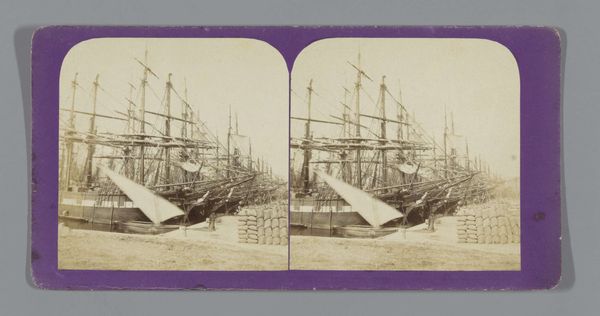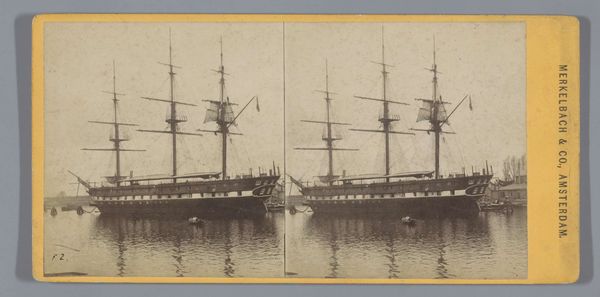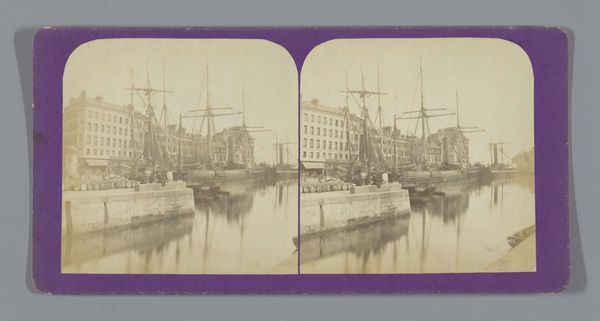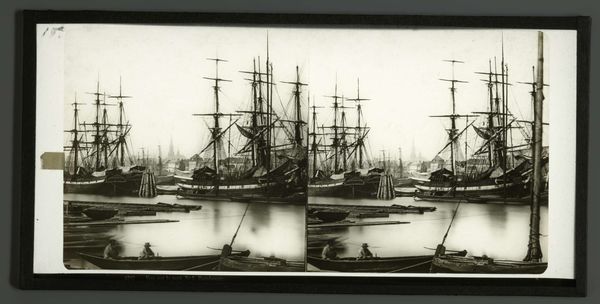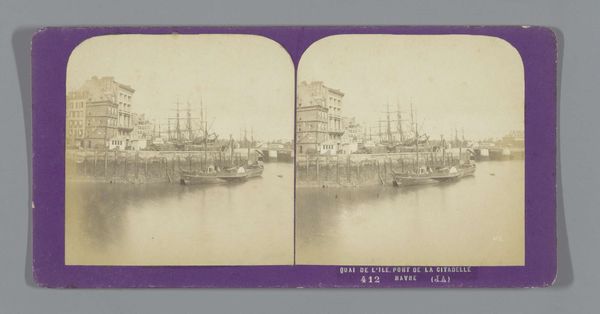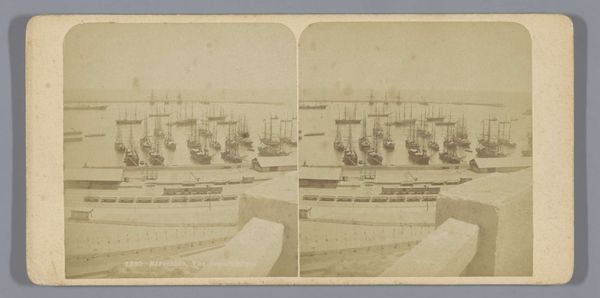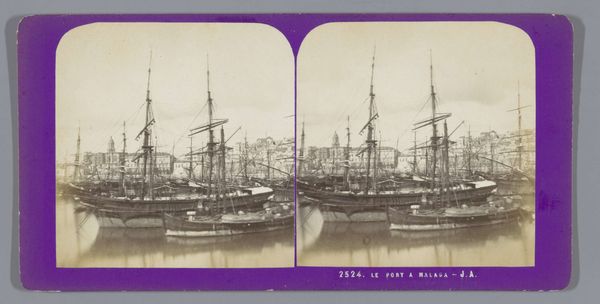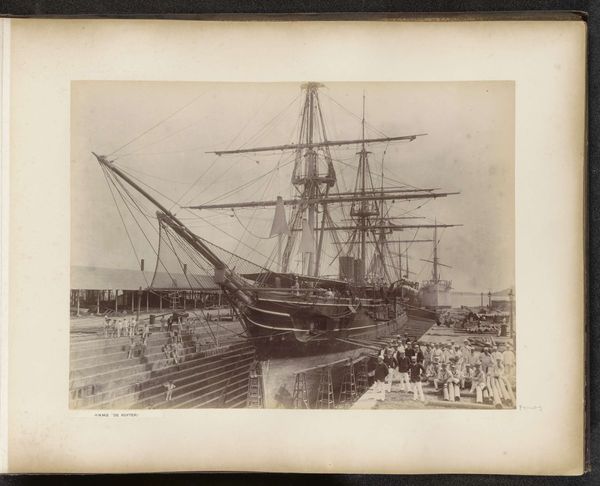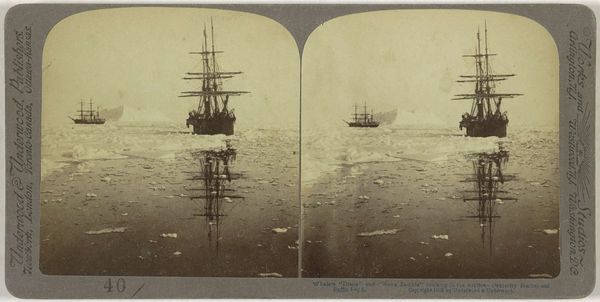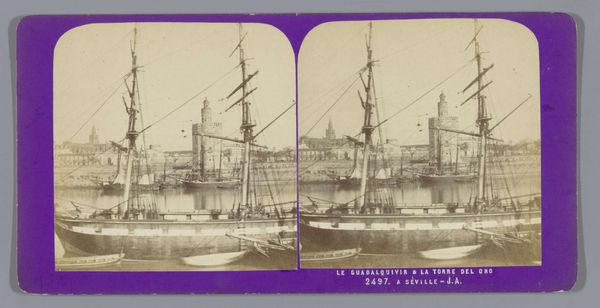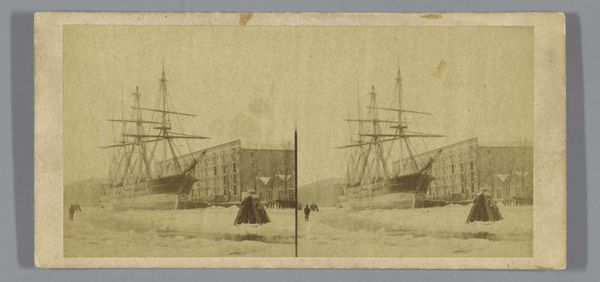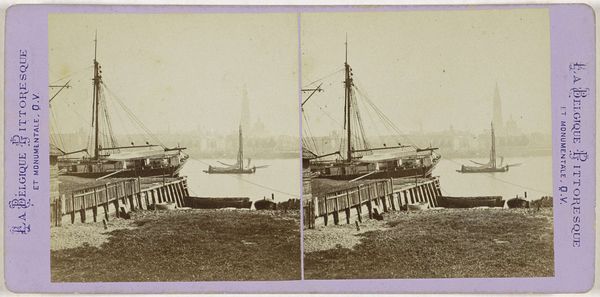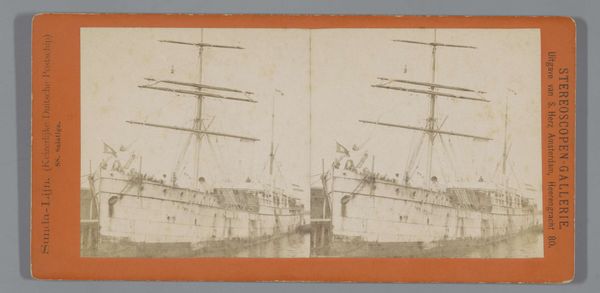
print, photography
# print
#
landscape
#
photography
#
orientalism
#
cityscape
#
realism
Dimensions: height 88 mm, width 177 mm
Copyright: Rijks Museum: Open Domain
Editor: So, this is Jean Andrieu's "View of a Ship in the Port of Messina," probably taken between 1862 and 1876. It's a photograph, presented as a stereoscopic print. It’s incredibly detailed; the rigging on the ships is amazing. It gives the impression of a very bustling, important port, but also a sense of the power dynamics inherent in trade and maritime activity. What do you see in this piece? Curator: Beyond the immediately visible port scene, I see a photograph deeply embedded within the political and economic contexts of its time. Messina, as a vital Mediterranean port, was a hub of colonial exchange. The imposing ships weren’t just for trade; they were also tools of imperial power. Does this image make you consider the implications of resource extraction and the role that places like Messina played in supporting colonial enterprises? Editor: I hadn't really thought of it that way. I was more focused on the technical aspects of the photograph itself and how the scene felt so realistic. But thinking about colonialism makes it more complicated. What does the 'Orientalism' tag tell us about its original audience? Curator: Exactly. "Orientalism" as a label suggests that European audiences may have viewed images like these through a lens of exoticism and cultural superiority. It speaks to the gaze of the colonizer. The way Messina, an Italian port city with ancient Greek and other diverse influences, is portrayed becomes loaded. What details in the photograph might be chosen to emphasize that sense of 'otherness,' whether intentionally or unintentionally? Editor: The crisp details do almost romanticize the scene in a way... It feels less like everyday life and more like a carefully constructed image. Curator: Precisely. So how can we, as contemporary viewers, engage critically with such an image? Is it possible to appreciate its aesthetic qualities while also acknowledging its potentially problematic underpinnings? Editor: It's a real balancing act, appreciating the technical skill while staying aware of the historical context and power dynamics at play. Curator: Indeed. And by engaging in this type of dialogue, we challenge ourselves to view historical images not just as pretty pictures, but as complex artifacts that reflect the social, political, and economic forces of their time. It's through critical readings that we unearth deeper understandings. Editor: Absolutely. I'll definitely look at these kinds of images differently from now on!
Comments
No comments
Be the first to comment and join the conversation on the ultimate creative platform.

